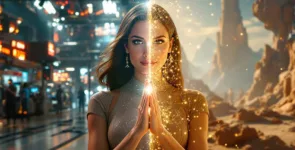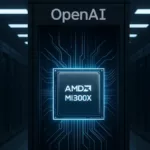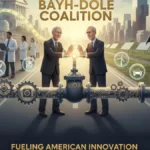The entertainment world has been set ablaze by the “Tilly Norwood” controversy and for good reason. The revelation that a beloved character in a well received show was not a real person but a fully AI-generated “synthetic actor” has become a flashpoint for a debate raging in Hollywood (AI Commissioner example). For many actors, it represents an existential threat that their craft is on the verge of being rendered obsolete by code. While their fear is understandable, history shows us that trying to ban a transformative technology is a fool’s errand.
The furor over Tilly Norwood is not a new story; it’s the latest chapter in a long book of industries trying to fight the future. The acting community’s calls to restrict or ban synthetic performers echo the same desperate cries heard from other sectors on the brink of disruption. This moment is a painful but necessary catalyst that should force actors not to fight the technology, but to redefine their role in it.
History’s Unforgiving Lesson: Adapt or Disappear
Creative industries have a long and storied history of trying to legislate technological progress out of existence, and they have failed every single time. In the late 1990s, the music industry, led by the RIAA, declared war on the MP3 file format and platforms like Napster. They sued college students and lobbied for restrictive laws, all in an attempt to preserve the lucrative CD/album model. The result? They were utterly circumvented by companies like Apple and Spotify that embraced digital distribution, fundamentally reshaping the industry and leaving the old guard in the dust.
Similarly, Blockbuster, the undisputed king of home video, saw Netflix’s DVD-by-mail service as a niche annoyance and completely dismissed the looming threat of streaming. By the time Blockbuster recognized the shift, it was too late. Its entire business model, built on physical locations and late fees, was rendered obsolete. The companies that won were not the ones that tried to block the change, but the ones that built their businesses around it. The history of disruptive innovation is clear: resistance is futile.
The AI Revolution: Better, Faster and More Profitable Content
The uncomfortable truth for many in the traditional film industry is that entirely AI-generated content is poised to be not just cheaper, but creatively superior to what is possible today. An AI does not need to sleep, eat or be limited by the laws of physics. It can generate photorealistic fantasy worlds, de-age an actor to any point in their career or create a thousand unique alien creatures without a single artist touching a physical model. This unlocks a level of creative freedom and visual spectacle that is currently reserved for only the most astronomically budgeted blockbusters.
The profitability model is even more compelling. Consider the enormous costs AI eliminates: A-list actor salaries, fees for directors and screenwriters, costs for location scouting, set construction, catering and massive visual effects teams. AI can iterate on a script, a character design or an entire scene in minutes, not months. We are already seeing the green shoots of this revolution in viral, AI-generated short films and music videos that possess a visual quality that would have cost millions just a few years ago. Furthermore, AI opens the door to hyper-personalized content—imagine a movie where the lead character is a digital recreation of your favorite classic film star, or where the plot subtly adjusts based on your viewing preferences. This level of engagement is a service traditional media simply cannot offer.
The New Role for Actors: From Performer to Licensor
So, where does this leave the acting community? To survive, they must evolve their business model from being work-for-hire performers to being licensors and creative consultants for their own digital likeness. Their brand, their unique charisma and the public’s connection to them are still immensely valuable assets. The Screen Actors Guild (SAG-AFTRA), which has already begun exploring AI guidelines, must pioneer the creation of standardized licensing agreements that allow actors to profit every time their AI-generated likeness is used.
The role of an actor will shift from performing on set to curating the performance of their digital double. The most talented actors will be hired not for a six-week shoot, but for their ability to provide the nuanced emotional data and creative guidance needed to train a high-fidelity AI model of themselves. Their job will be to act as “Performance Directors,” ensuring their digital counterpart captures the soul and subtlety of their craft. At the same time, this technological shift will inevitably make live performance—theater, concerts, improv—more valuable as a unique, un-replicable human experience.
Wrapping Up
The Tilly Norwood controversy is a painful wake-up call, but it is not a death sentence for the acting profession. It is, however, the end of the profession as we know it. Trying to put the AI genie back in the bottle is a strategy doomed to repeat the failures of the music and video industries. The future for actors is not in fighting this technology, but in mastering it. By embracing their new role as brand licensors and creative directors for their own AI, they can secure their income and ensure that their unique human artistry remains at the heart of the stories we love.








